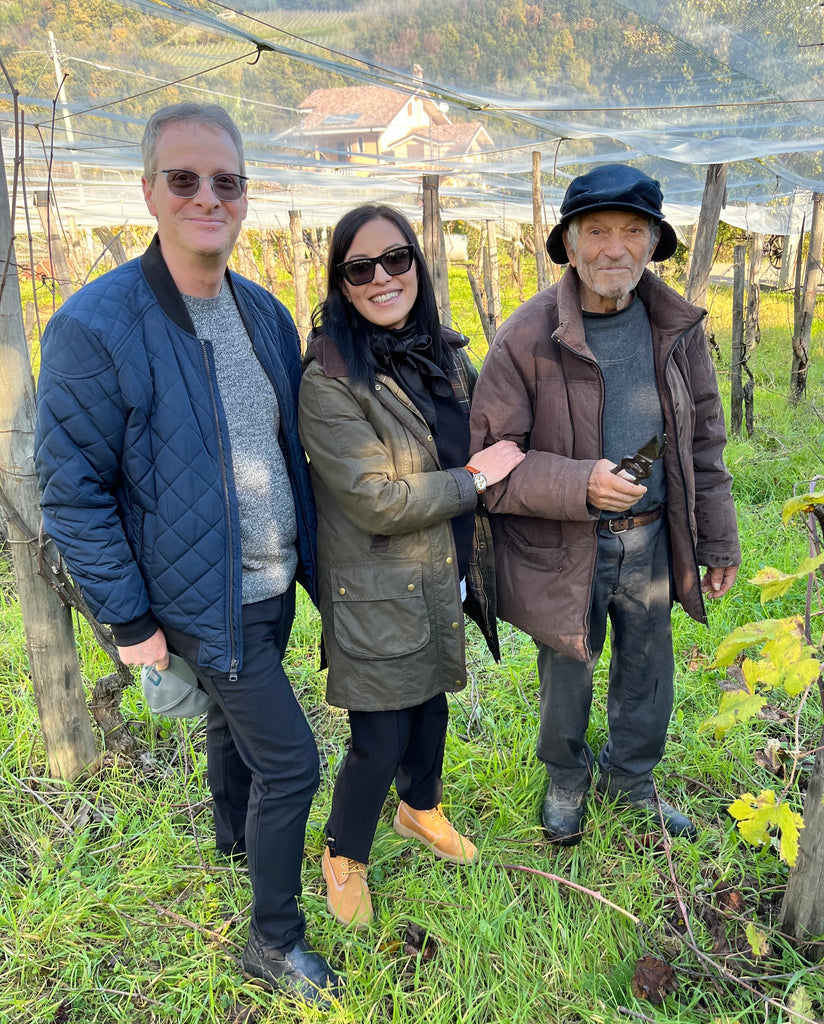Our tasting impressions
Don't look now, but Ersa is getting better! The 2018 seemed to thrill everyone who tasted it. This vintage notches up the sweetness of the fruit. Overall, it seems a bit livelier. Ersa offers incredible utility. It's delicious enough to drink with pizza, yet it's sophistication means you can pair it with the high-end tasting menu at your favorite restaurant. We are really fortunate to have a beauty such as this.
About this wine
This year, Ersa is a blend of 35% Aglianico, 35% Cabernet Sauvignon, 20% Barbera and 10% other native varieties. The soil is calcareous with green and red clay and some sandstone. The elevation is about 250 meters.
A manual harvest began on October 4th. The grapes for this wine are selected on the first pass through the vineyards (the remaining suitable grapes go into Difesa). Fermentation is in plastic vats. Maceration is on the skins for 20 days with gentle punch-downs. The wine is moved into French oak barrels (10% new and 90% one-year old) to age for 24 months. Then, they rest in bottle for at least a year, so they are ready to enjoy upon release. Production in 2019 was 8,500 bottles.
About the grapes
Aglianico is one of Italy's three most prestigious grape varieties - along with Nebbiolo and Sangiovese. Grown mostly in southern Italy, it is at its best from Campania and Basilicata. It thrives in a warm and dry climate.
Cabernet Sauvignon, famous the world over, is hearty fruit that flowers and ripens late. It is highly adaptive to a wide variety of climates and soils. Its vines are capable of prodigious production, which must be restricted in order to produce the grape's best quality. Barbera is a dark-skinned grape from vigorously growing, easy to manage vines. It is high in acidity, low in tannins and light-bodied. Principal among the other native varieties is Aglianicone, which, despite its name and genetic similarity to Aglianico, is actually a version of Ciliegiolio.
The other grapes are unclassified and even Francesca doesn't know the names of some of them.
Francesca's thoughts on the vintage
The winter was quite dry with temperatures often above the seasonal norm. Spring arrived a little early and, from mid-March, the beautiful sunny days and a significant increase in temperatures resulted in the enlargement of the buds. But, in April came a substantial drop in temperatures and return of the rains. The rest of spring was rather unusual as prevailing north winds brought rains and cold temperatures. The end of May and June saw favorable conditions with sunny days, normal temperatures and excellent ventilation (especially at night).
At the end of June, temperatures soared that fortunately lasted only a short time. July and August were typically hot, except for the last week of July which was sultry. Immediately after mid-August there were refreshing rains, which helped the vines and grapes to thrive.
On your table
Pizza, as noted, or a beef stew enriched by dried fruits.
Francesca Fiasco is young, passionate and driven. Since 2015, she has relentlessly worked the land and cellar her grandparents started many decades ago in the beautiful Cilento National Park (a preserve that prohibits any industrial activity). Everything she knows about farming and wine she learned from her Nonno. More than 90 years old, Luigi still tends the vines.
From the 6.5 hectare farm (comprised of various small vineyards), Francesca produces less than 20,000 bottles per year from a mixture of traditional local grapes, some typical of other regions of Italy and one conspicuous interloper from France - Cabernet Sauvignon. Production of her 4 wines is unconventional - it's Nonno's way - but the results are remarkable. The expectation from a farm like this, in an area like this, is that the wines will be rustic, simple and honest. Instead, we find sophistication and complexity without compromising a clear expression of the place they come from.
To say that this is manual labor is an understatement. It starts with the grapes for each wine being harvested separately and concludes with Francesca writing notes on each case of wine leaving her cellar. Her devotion and determination are undeniable. The wines from Paestum may not be well-known or highly regarded but don't tell her that - nor does anyone who has tasted her wines much care. Wow, what a discovery! Only the great story of this family and Francesca's project can outshine her wines.
